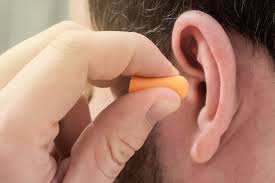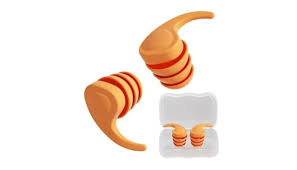If you’re considering earplugs for noise reduction, silicone earplugs might be the perfect choice for you. Whether you’re trying to protect your hearing from loud noises, reduce distractions to sleep better, or simply maintain comfort throughout the day, silicone earplugs offer a great solution. But how exactly do these small, soft earplugs benefit us? Let’s explore what makes silicone earplugs so effective for both ear protection and comfort.
What Are Silicone Earplugs?
Silicone earplugs are made from soft, flexible, medical-grade silicone, a material that is both durable and comfortable. Unlike foam earplugs that need to be squeezed before inserting, silicone earplugs are easier to use. You simply insert them into your ear canal and twist them slightly to achieve a secure fit.

Why Consider Silicone Earplugs?
Comfortable Fit
One of the standout features of silicone earplugs is their comfort. They are smooth and gentle on the ears, making them perfect for extended wear. Unlike foam earplugs, which can irritate the skin after long use, silicone earplugs provide a comfortable, snug fit without causing discomfort—even if you forget to remove them in the morning.
Reusability
In line with environmental concerns, silicone earplugs are a great choice due to their reusability. Unlike foam earplugs that are single-use, silicone earplugs can be cleaned and reused many times. A simple wash with mild soap and warm water, followed by drying, ensures they’re ready to use again. This not only saves money but also reduces waste.
Effective Noise Reduction
Silicone earplugs are highly effective at reducing noise. They block out various frequencies, allowing you to focus or protect your ears from harmful sound exposure. This is useful for those working in noisy environments or living in bustling cities. With their noise reduction capabilities, silicone earplugs help you maintain a peaceful, quieter environment.
Easy to Use
Silicone earplugs are incredibly easy to use. Their flexibility makes them simple to insert into the ear, and you can twist them slightly to ensure a perfect fit. This feature is particularly beneficial for people who may struggle with the traditional method of inserting foam earplugs, such as those with mobility issues or disabilities.

Potential Downsides of Silicone Earplugs
Slight Learning Curve
While silicone earplugs are easy to use, it may take a bit of practice to get the right fit. The insertion technique requires a little adjustment, especially when you first start using them. But with a bit of practice, you’ll quickly get the hang of it.
Not Completely Soundproof
Silicone earplugs do not provide complete soundproofing. They are effective at reducing noise, but they don’t eliminate all sound. For most people, this level of noise reduction is sufficient, but if you’re looking for total sound blockage, you may need to explore other options.
Can Be Expensive
Silicone earplugs tend to be pricier than foam earplugs, primarily due to their durability and reusability. However, when considering their long-term value—since they can be reused multiple times—the initial cost becomes more reasonable.
Comparing to Other Types of Earplugs
Foam Earplugs
Foam earplugs are a popular choice because they are affordable and provide a good level of comfort. However, they are single-use, meaning they contribute to more waste over time. While they are effective at blocking noise, they may not be as comfortable for long periods of wear.
Flanged Earplugs
Flanged earplugs offer higher noise reduction compared to silicone earplugs and are better suited for very noisy environments. However, they may not be as comfortable or user-friendly as silicone earplugs, particularly for extended use.
Custom Molded Earplugs
Custom-molded earplugs provide the best noise reduction as they are tailored to fit your specific ear canal. They are comfortable and effective but tend to be much more expensive than silicone earplugs. Additionally, they are not as easy to clean and reuse.
Tips for Using Silicone Earplugs
- Clean After Use: Ensure you wash your silicone earplugs with mild soap and warm water after each use to maintain hygiene.
- Dry Thoroughly: Allow the earplugs to dry completely before storing them to prevent bacterial growth.
- Choose the Right Size: Silicone earplugs come in various sizes. Choose the size that fits your ear canal comfortably, without being too tight.
- Practice Makes Perfect: First-time users may need to practice inserting the earplugs properly to achieve the best seal and comfort.
Silicone earplugs are an excellent choice for anyone seeking a comfortable, reusable, and effective solution for noise reduction. While they may not provide complete soundproofing, they are ideal for those who want a more comfortable fit than foam earplugs and care about the environment. Whether you need to block out noise to sleep, protect your ears from loud sounds, or simply enjoy some peace and quiet, silicone earplugs are a great option to consider.